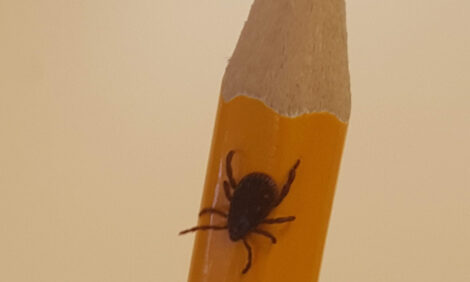



Yuan Fang Takes Food-Safety Fight to Cellular Level
Research includes investigation of microbial resistance to sanitizersEven with all of our sanitization technology, we shouldn’t underestimate foodborne pathogens, says food microbiologist Yuan Fang.
Fang joined the University of Arkansas System Division of Agriculture’s food science department in January as an assistant professor in food microbiology.
“Yuan is a valuable addition to our team, as she has extensive knowledge of molecular microbiology and red meat safety,” said Jeyam Subbiah, professor and head of the food science department. “Her skills complement our existing strengths in virology, low-moisture food safety, and poultry safety. She will play a key role in advancing the Center for Food Safety’s mission.”
Fang’s research through the Arkansas Agricultural Experiment Station, the research arm of the Division of Agriculture, includes investigating microbial resistance to sanitizers used in food processing facilities such as high heat, pressure, acids, chlorine and hydrogen peroxide.
“Microbes are survivors, and they have the ability to adapt to the environment,” Fang said. “It’s the same for us. If we live in a harsh environment, we can develop strategies to live.”
Her background in molecular biology and functional genomics helps her look at things from a different perspective regarding food safety. As a Ph.D. student at the University of Alberta, Fang developed a single-cell quantification technology that her team used to investigate Shiga-toxin-producing E. coli at the single-cell level instead of the population level. It was a first in the food safety research sector. Fang was the lead author of the study “Induction of Shiga-Toxin Encoding Prophage by Abiotic Stress in Food” published in 2017 by the American Society for Microbiology. This type of E. coli infection can produce bloody diarrhea in humans and in some cases, lead to kidney failure.
Fang said microbes have diverse strategies to cope with various types of stress, including competition with other microorganisms, lack of nutrients and water and even predator microbes. She said it calls for investigations on the cellular level.
“You have to understand how they adapted, so instead of just looking for quick solutions, you need to focus on how the microbes die from the intervention technology applied,” Fang said. “Technology is great, but we must respect an organism’s fundamentals. We cannot underestimate them.”
Hard to reach places
When food manufacturers wash and sanitize specific work zones, some areas like drains and corners are hard to sanitize effectively, Fang said. The bacteria that can cause problems can also be transferred to other regions by some physical force like splashing water or foot traffic. Bacteria that develop something called “biofilms” take on a new level of defense and are generally more resistant to sanitization forces, Fang noted.
“In general, E. coli is not harmful, but there is a specific group of E. coli that encode the genes that produce the Shiga toxins,” Fang said. “An interesting thing is this group of E. coli that produces Shiga toxins is harmless to cattle, and they are the natural incubator of this group of E.coli.”
Fang earned her bachelor’s degree in science, with distinction, specializing in food science from the University of Manitoba, and her doctorate in food science and technology from the University of Alberta.
Prior to joining the Division of Agriculture, Fang worked as a biologist for three years at the Agriculture and Agri-Food Canada’s research center — Canada’s equivalent to the U.S. Department of Agriculture — and was a research associate for the University of Manitoba’s food science department.
The food science course Sanitation and Safety in Food Processing Operations is now being co-taught by Fang with Morgan Denzer through the Dale Bumpers College of Agricultural, Food and Life Sciences. She also has plans to develop a graduate-level course.


